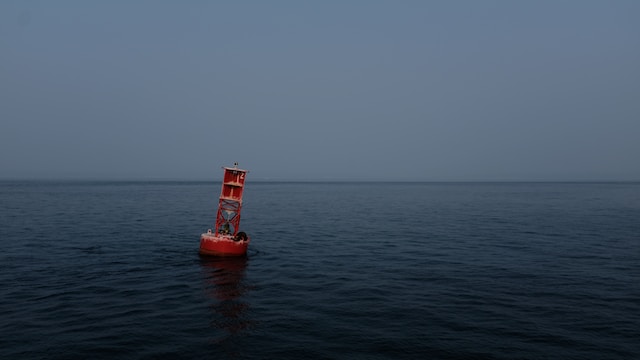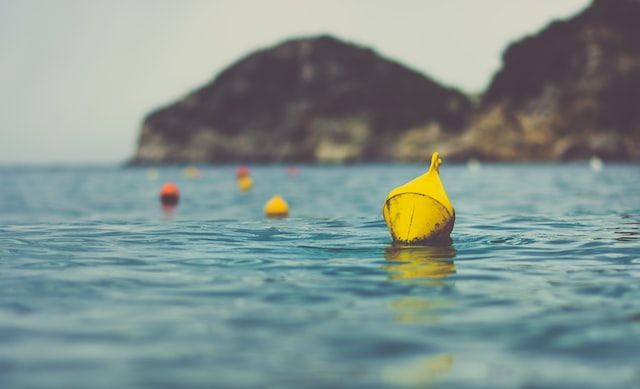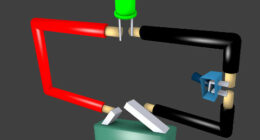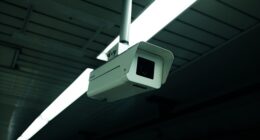A buoy is a floating device that is anchored to the seafloor and used to mark a specific location. A beacon is a fixed, land-based navigation aid that emits a signal that can be used by ships and aircraft to determine their position. Buoys are typically used to mark shipping channels, while beacons are used to mark the approach to a harbour or landing strip.
What is a buoy?
(Photo by Girma Nigusse on Unsplash )

A buoy is a floating device typically anchored in bodies of water such as oceans, lakes, or rivers. It serves various purposes, including navigation, marking hazards, and collecting weather or environmental data. Buoys are often cylindrical or spherical in shape and made of durable materials like metal or plastic. They are designed to remain buoyant on the water’s surface, providing visual references for ships, boats, and marine vessels. Buoys may be equipped with lights, reflectors, or other signals to enhance visibility, especially during low light conditions. They play a vital role in maritime safety, guiding maritime traffic and providing crucial information to sailors, fishermen, and navigators.
What is a beacon?
(Photo by todd kent on Unsplash )

A beacon is a device or structure that emits a signal or light to serve as a navigational or warning aid. It is typically placed in strategic locations to provide important information or guide people or vehicles. Beacons can be found in various settings, including maritime, aviation, and terrestrial environments. In maritime contexts, a beacon may be located on a coast or a body of water, serving as a visual reference point for ships and boats. Aviation beacons are often installed on tall structures, such as towers or buildings, to indicate the presence of obstacles or to help pilots navigate. In terrestrial settings, beacons can mark specific locations or serve as landmarks for travelers. Overall, beacons play a crucial role in enhancing safety and providing guidance in different domains.
Types of buoys
There are several types of buoys used for various purposes. Some common types include:
Navigational Buoys: These buoys help mark channels, indicate safe water, and guide vessels in navigation. They are often color-coded, with red and green buoys indicating the sides of a channel or route.
Mooring Buoys: Mooring buoys are used to secure boats and ships temporarily. They provide a stable anchor point in areas where permanent moorings are not available.
Data Collection Buoys: These buoys are equipped with sensors and instruments to collect and transmit various environmental and weather data such as temperature, wave height, wind speed, and water quality.
Special Purpose Buoys: There are buoys designed for specific purposes, such as:
Lighted Buoys: These buoys have built-in lights to enhance visibility and aid navigation during nighttime or low visibility conditions.
Wreck Buoys: They mark the location of sunken ships or hazards, warning vessels to avoid the area.
Ice Buoys: These buoys are used in icy waters to monitor ice conditions, track ice movement, and provide information for icebreakers and ships.
Each type of buoy serves a unique function and contributes to maritime safety, navigation, and environmental monitoring.
How do you identify a buoy?
Identifying a buoy can be done by observing its characteristics and any accompanying markers. Here are some ways to identify a buoy:
Colors: Buoys are often painted in specific colors to convey important information. Red buoys typically indicate the right side of a channel or a preferred navigational route when entering from the sea. Green buoys, on the other hand, mark the left side of a channel. Yellow or white buoys are commonly used for special purposes, such as cautionary or informational markers.
Shape and Size: Buoys come in various shapes and sizes, depending on their intended function. Navigational buoys are typically cylindrical or conical in shape, while special-purpose buoys may have distinct shapes, such as a diamond or a pillar.
Markings: Buoys often feature markings, symbols, or alphanumeric codes to provide specific information. These markings can indicate the buoy’s purpose, its identification number, or the direction of safe passage.
Lights and Reflectors: Many buoys are equipped with lights that emit specific colors or patterns, especially during nighttime. These lights help distinguish different types of buoys and provide additional navigational guidance. Reflective materials or reflectors on buoys also enhance visibility during daylight hours.
Signage and Flags: Some buoys may have signs or flags attached to them, providing further information or warnings. These signs can include navigational aids, hazard symbols, or regulatory notices.
By considering these factors and familiarizing yourself with navigational conventions, you can effectively identify buoys and interpret the information they convey for safer navigation on the water.
Types of beacons
There are several types of beacons used for different purposes. Here are some common types:
Navigational Beacons: These beacons are installed in coastal areas or water bodies to guide maritime navigation. They can mark channels, reefs, or other hazards, helping ships and boats determine their position and navigate safely.
Aviation Beacons: Aviation beacons are used to mark tall structures, such as towers, chimneys, or buildings, to make them more visible to aircraft. They help pilots identify potential obstacles and navigate around them, especially during low visibility conditions.
Emergency Beacons: These beacons are designed to provide distress signals or emergency alerts. They can be used in various situations, such as maritime distress beacons (EPIRBs) used for signaling emergencies at sea or emergency beacons used in wilderness areas for search and rescue operations.
Warning Beacons: Warning beacons are used to alert people to potential dangers or hazards. They can be found in construction zones, roadways, or industrial areas, indicating caution, restricted areas, or traffic conditions.
Communication Beacons: These beacons are utilized for communication purposes, often in remote or inaccessible areas. They can be radio beacons, satellite beacons, or other forms of communication devices, enabling signals to be transmitted over long distances.
Wayfinding Beacons: Wayfinding beacons are used to guide and assist people in navigation. They can be found in airports, train stations, or large complexes, providing information, directions, or location-specific services through mobile devices.
These are just a few examples of the various types of beacons that serve different functions in different domains. Each type plays a crucial role in providing guidance, safety, and communication in their respective contexts.
Featured Image By – Alex Blăjan on Unsplash








